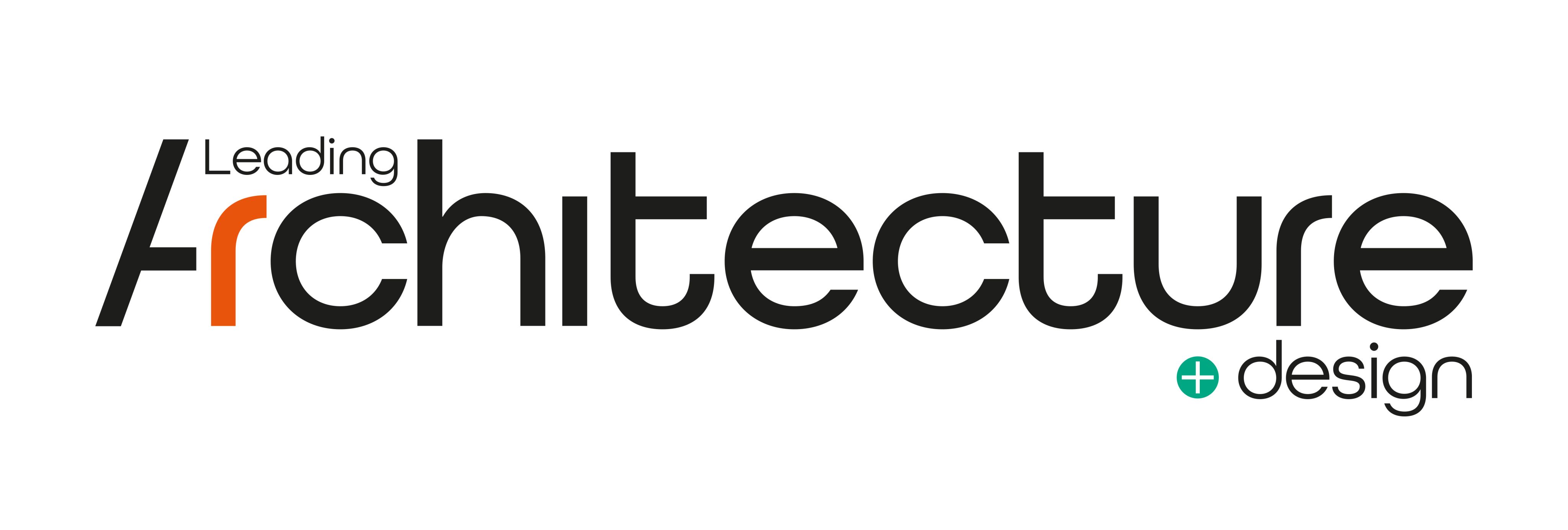African arrival
The Port of Durban has a new cruise terminal designed by Elphick Proome Architecture, an energising architectural landmark and a catalyst for the regeneration of one of the oldest parts of the city.
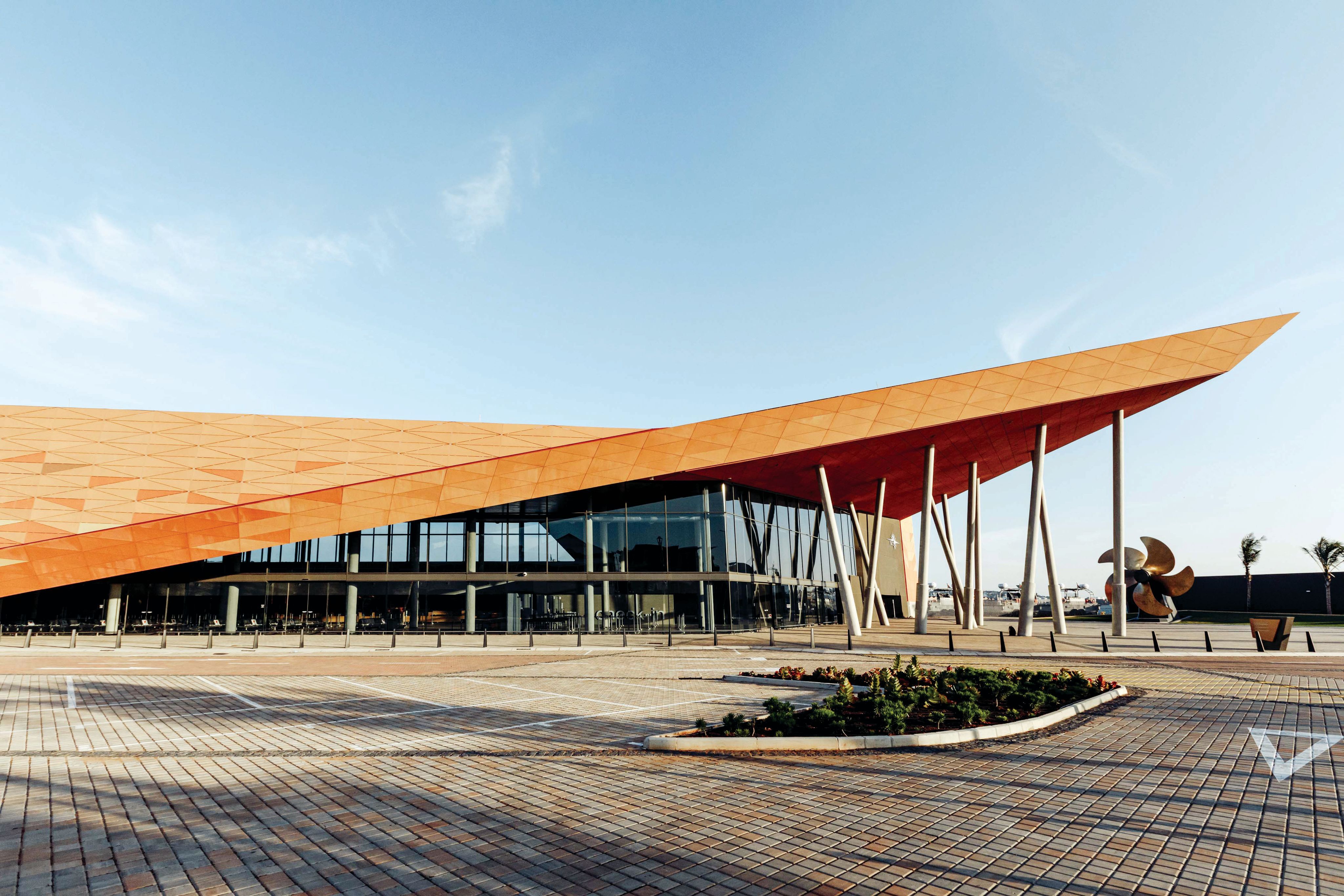
The Port of Durban cruise terminal, the ocean cruise capital of Sub-Saharan Africa, operated out of a rudimentary shed for decades. Last year, in time for the 2022 cruising season, the gateway to the province opened a new cruise terminal designed by Elphick Proome Architecture (EPA) which acts as a portal to the Kingdom of the Zulus, welcoming tourists to the province and its culture.
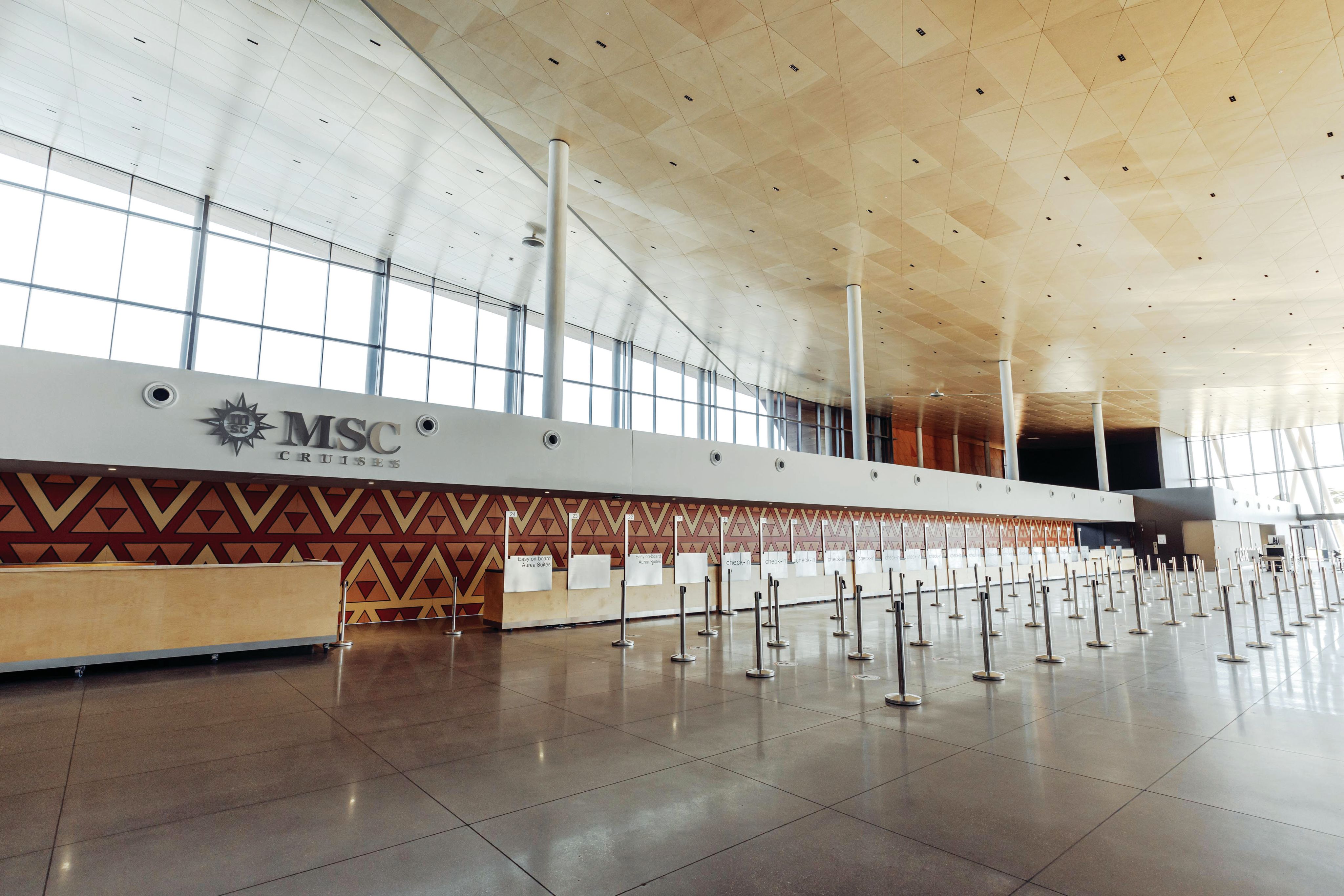
The terminal is designed to facilitate the embarkation and disembarkation of 6 000 passengers a day and is planned to allow the functions attached to each process to occur efficiently. Unlike an airport, a cruise terminal demands large flows of people in short timeframes, so a clear and legible planning solution over a single level is fundamental.
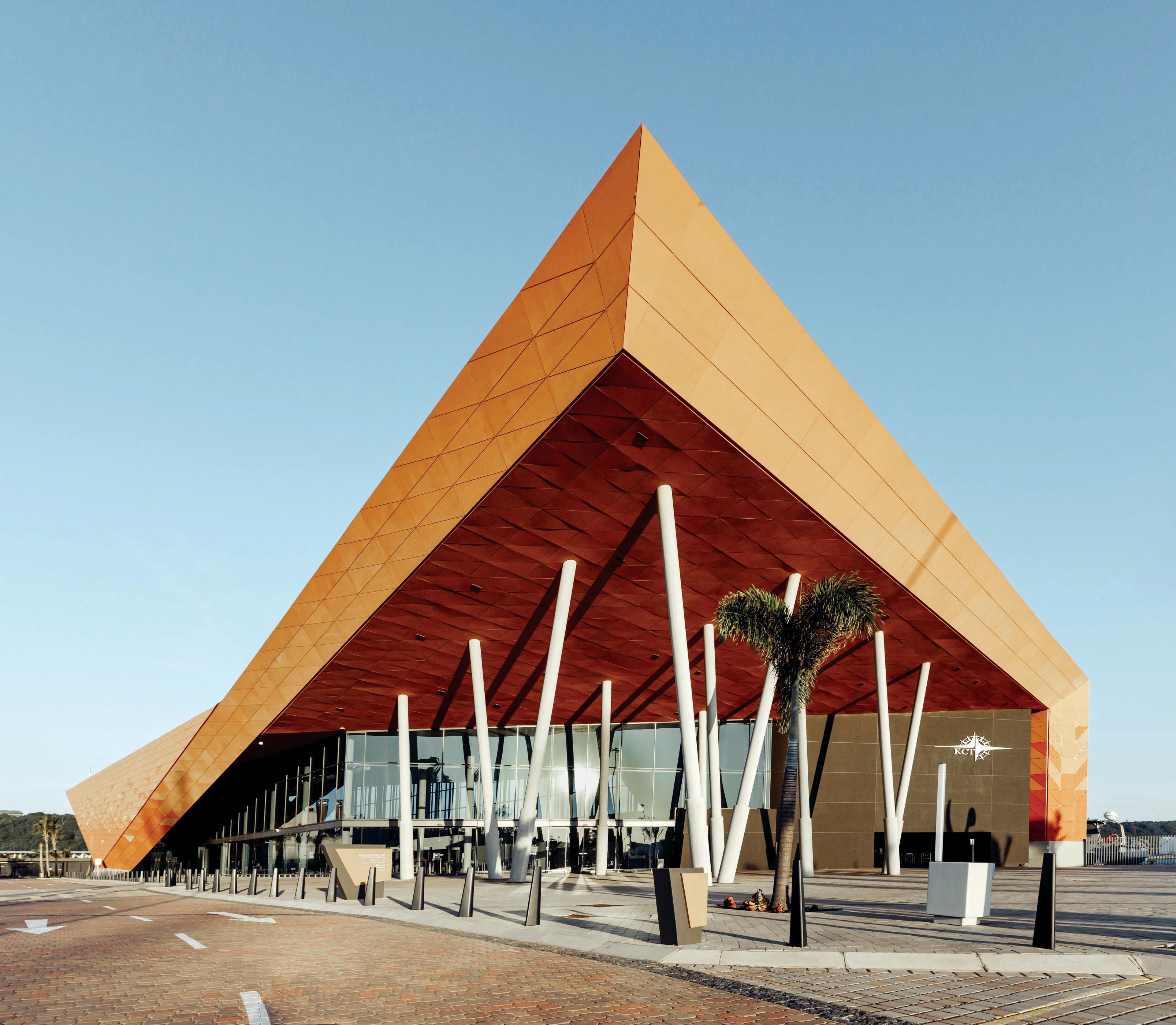
The powerful form of the new terminal building, which projects an overtly African identity, displays many layers of metaphor while interfacing with the harbour and city. The distinctively ‘folded’ form, which draws inspiration from the earthy colours, vibrant textures and traditional triangular motifs displayed in Zulu craft, offers a powerful image for passengers to view from docked liners’ decks above. The building’s principal engagement with the city, however, is its spatial and visual connectivity to the historic precinct and the creation of strategic outdoor public spaces linked to the city’s beachfront and harbour edge.
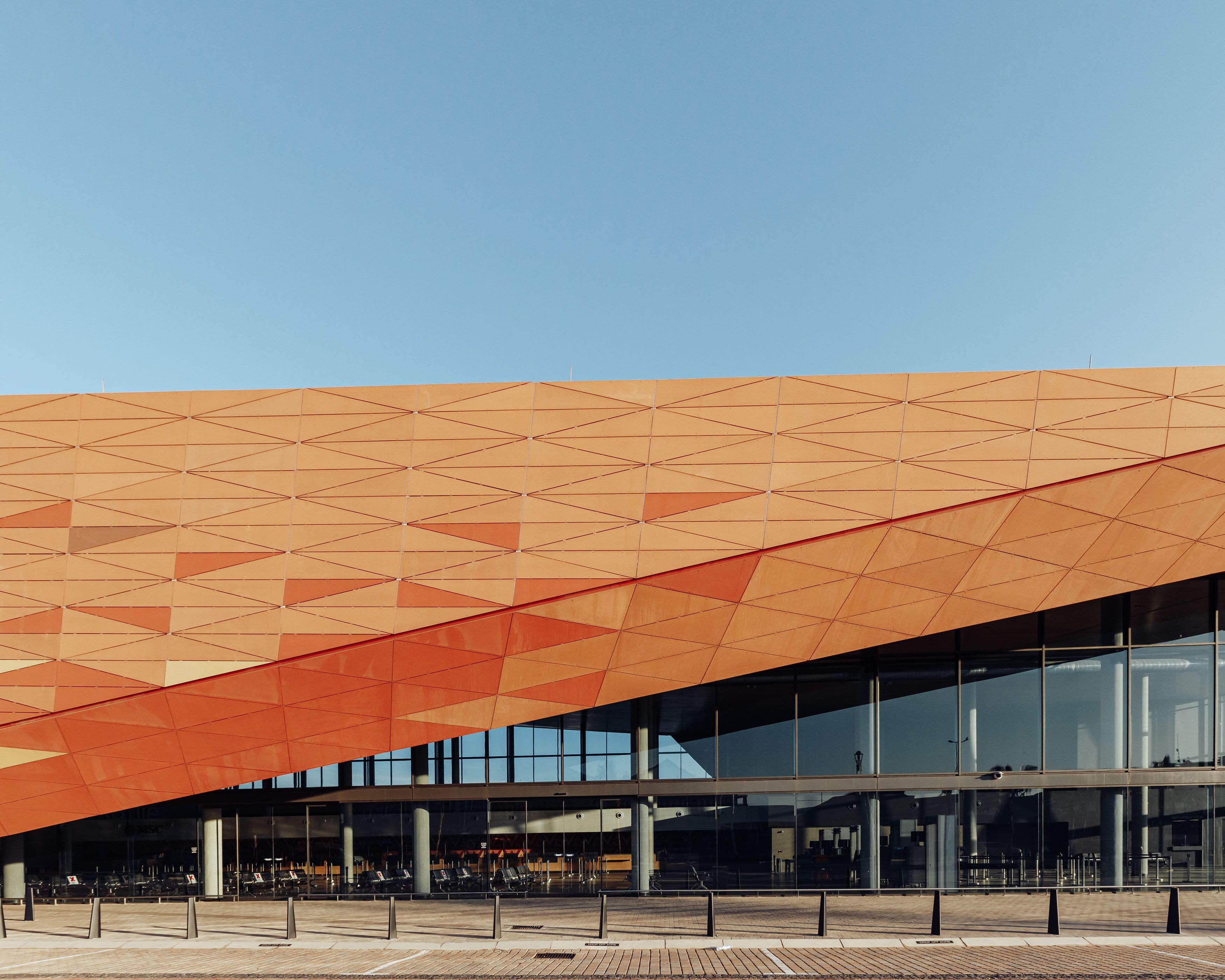
Terracotta cladding wraps all the building’s surfaces, including the roof, and unifies its form. The variant colouration, inspired by Zulu artwork, is unique, contextual and demands attention – boldly contrasting the conventional white or grey treatment characterising most transportation buildings globally.
Randomly arranged structural columns set on an ‘African grid’ support a vast canopy interfacing with an expansive piazza. This over-sailing construct announces the entrance and, together with the folded form of the façades and roof, generates a simple yet intricate architectural expression.
The dominant angular enclosure connects tenuously to the ground in strategic positions to emphasise the drama of the terminal’s massive, cantilevered overhangs. Crafted external paving arrangements and rich subtropical landscaping deliver an exciting and carefully orchestrated pedestrian experience that draws focus to the complex’s public piazza.
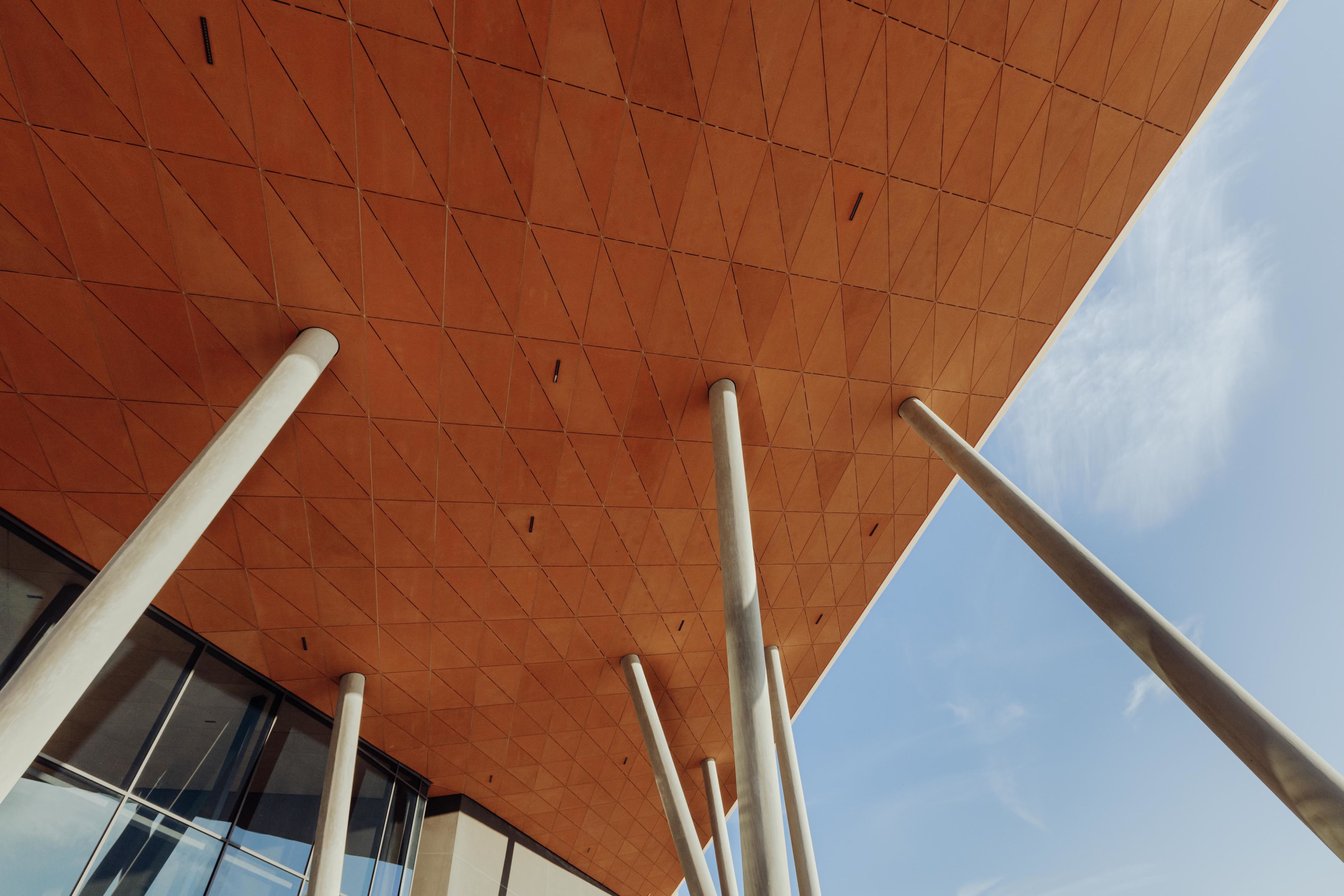
Inside, the triangular motif of the envelope extends into the arrivals and departures spaces, both on the vast timber ceiling and onto selected feature walls. Finishes, graphics and colouration are applied to enhance the cruise experience. Where the external envelope angles away, large expanses of glazing reveal broad vistas across the forecourt and the rejuvenated Victorian façades of the historic precinct beyond.
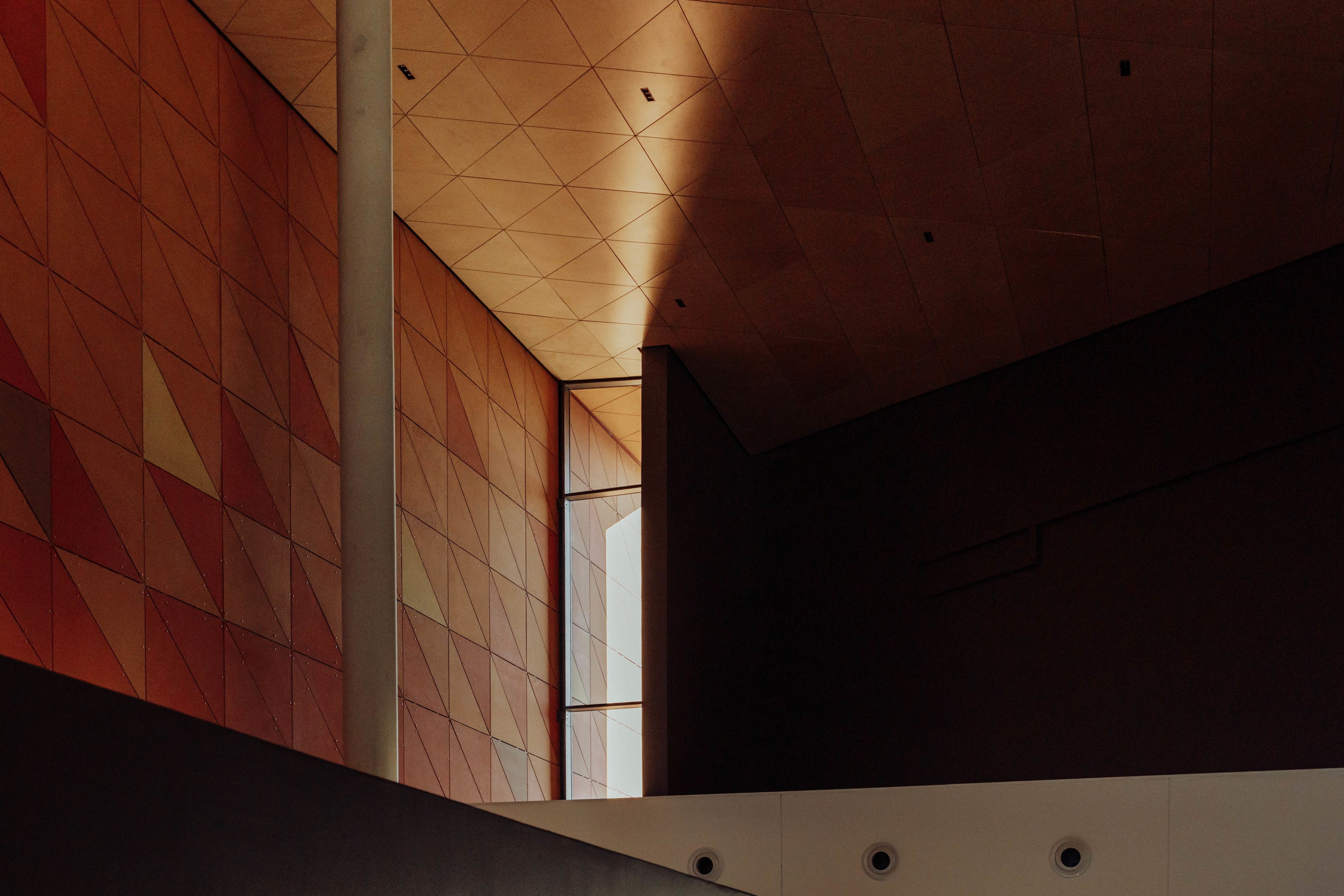
The form of the roof is reflected internally, which prompts arriving passengers towards the entrance and directs the visual attention of departing passengers to the docked ship wharfside. Once inside, vistas are carefully curated across the arrivals hall to welcome disembarking passengers to the city beyond. This experiential sequence ultimately heightens the conceptual notion of a portal and inherently exemplifies the spirit of the terminal.
The terminal is designed to convert into a conference centre during the five months of off-season time when cruising is not operative. This functional flexibility is achieved by allowing the division wall between the arrivals hall and the baggage collection hall to slide away completely, thus connecting the entire floorplate to operate as a fully connected space.
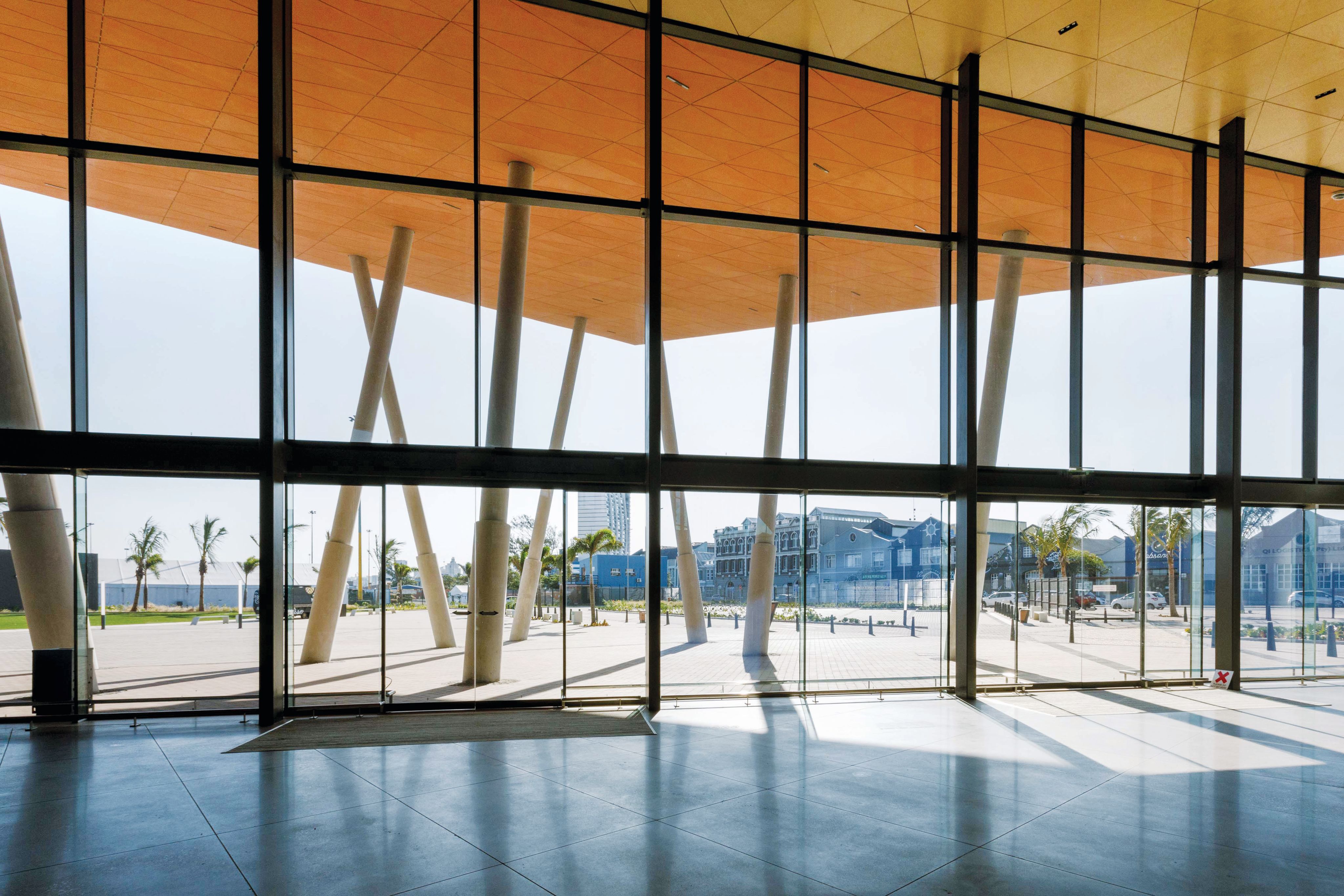
Effectively a large shed with extensive spans, the terminal’s profile envelope is generated by a consistent 1,2m deep primary steel structural zone clad with aluminium sheeting. This technical solution is applied to vertical and slightly inclined horizontal planes and facilitates a long northern-edge cantilever anchored on a single springing point. The entire envelope is clad externally, and partly internally, with variously configured triangular clip-on ventilated composite façade panels. These panels are parametrically generated and arranged to promote full triangular patterning with no cut panels on the roof and connecting façade surfaces.
This project was built during the Covid-19 pandemic under very trying and complex circumstances, exacerbated by material procurement shortages. Nonetheless, the building was completed on time and was delivered within a strictly defined budget. In addition, governmental requirements for affirmative action engagements with emerging sub-contractors offered positive impacts to disadvantaged communities though employment opportunities.
While opportunities to give back to the city are not a common architectural opportunity in the African urban development landscape, the Nelson Mandela Cruise Terminal is proving to be a positive and powerful contributor to the regeneration of one of the oldest parts of the city of Durban.
Professional Team
Architect: Elphick Proome Architecture
Architectural collaborator: Vusa Collaborative
Urban planner: GAPP Architects and Urban Designers
Project manager: Turner & Townsend
Quantity surveyor: Turner & Townsend
Civil/structural engineer: Arup
Wet services engineer: Arup
Mechanical engineer: Arup Fire engineer: Arup
Traffic engineer: Arup
Leading Architecture + Design is South Africa’s leading showcase of the country’s most exciting and innovative architectural and design projects. This bimonthly magazine speaks directly to South Africa’s architects, interior designers, engineers, construction companies and property developers. It also offers readers a showcase of the latest innovations, products and developments in the field of architecture and its related industries. The print edition of Leading Architecture + Design is complemented by a vibrant website, fortnightly newsletter and social media platforms.

